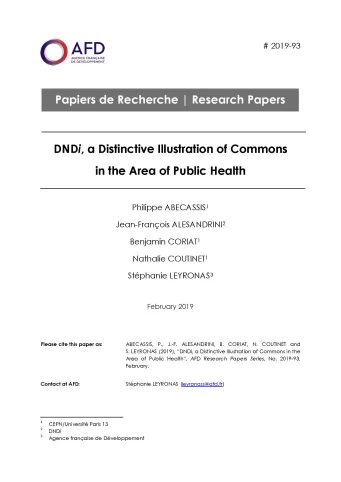Share the page
DNDi, a Distinctive Illustration of Commons in the Area of Public Health
Published on

Following many years of structural adjustment programmes, the last decades of the 20th century saw drastic reductions in the public health resources of developing countries. The failures of the liberal policies then promoted, alongside the emergence of the AIDS pandemic, gave rise to new public health practices and instruments under the “Global Health Initiative”. Among these, Product Development Partnerships (PDPs) dedicated for developing and delivering new health technologies for neglected diseases, emerged in association with the Millennium Development Goals adopted by the United Nations in 2000 to meet the needs of the world’s poorest populations. Along with these practices came novel conceptualisations. The description of public health as a Global Public Good (GPG) and then as a common good captures the trends in the narrative that fed and justified health practices especially regarding low resource setting countries. At the crossroad between operational and conceptual considerations, the aim of this article is to demonstrate how a distinctive PDP – the not-for-profit development organisation Drugs for Neglected Diseases initiative (DNDi) – can illustrate what can be presented as a “commons” within the area of public health. After setting the stage of PDPs’ emergence and the relevance of the commons approach 1), three features of DNDi, indicative of commons, will be more thoroughly developed: 2) its promotion of collaborative platforms and open innovation, 3) its innovative intellectual property policy, and 4) its governance, partnership and funding mechanisms. The document will then open up 5) on the implications of DNDi’s shift from neglected diseases to neglected people, especially regarding its nature as a chain of nested commons.
Useful Information
-
Authors
-
Philippe ABECASSIS, Jean-François ALESANDRINI, Benjamin CORIAT, Nathalie COUTINET, Stéphanie LEYRONAS
-
Coordinators
-
Edition
-
93
-
ISSN
-
2492-2846
